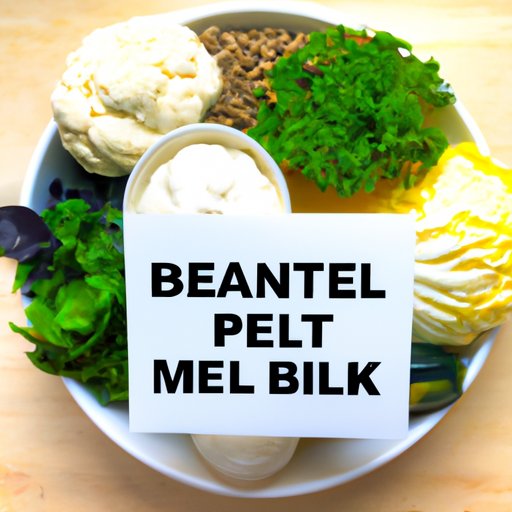
I. Introduction
Vegetarianism has become increasingly popular as people seek more sustainable and healthy food alternatives. This article is designed to help those who are considering or transitioning to a vegetarian diet. We will explore the basics, benefits, risks, and some tips for meatless meals.
II. “Going green: A beginner’s guide to a vegetarian diet”
A vegetarian diet is a plant-based diet that eliminates meat and other animal products. It can also include some variations, such as:
- Lacto-ovo vegetarianism, which allows dairy and eggs
- Pescatarianism, which includes fish
- Veganism, which excludes all animal products
Transitioning to a vegetarian diet can be challenging, but there are tips that can help make it easier, including:
- Start by reducing meat gradually
- Add more protein-rich plant-based foods, like lentils, beans, and tofu
- Stock up on fresh vegetables and fruits
III. “The benefits and risks of a plant-based diet: What you need to know”
The health benefits of a vegetarian diet include reducing the risk of heart disease, diabetes, and some types of cancer. On the other hand, it may also come with the risk of nutrient deficiencies if not planned properly, such as lack of protein, iron, and vitamin B12. However, a well-planned vegetarian diet can provide all the necessary nutrients.
In addition, a plant-based diet can have a positive impact on the environment. Animal agriculture contributes to greenhouse gas emissions and deforestation, among other environmental issues. Eating more plant-based meals can be a sustainable choice.
IV. “Meatless meals: How to switch to a vegetarian diet without sacrificing flavor”
Meat is not the only source of protein and flavor. There are plenty of tasty vegetarian options, such as:
- Chickpea curry
- Mushroom risotto
- Veggie burgers
There are also creative meat substitutes, like tempeh or seitan, and seasoning blends, like smoked paprika or Cajun spice. Many food websites and blogs offer vegetarian recipes.
V. “Comparing vegetarianism: Is it for everyone?”
There are various factors to consider when deciding if a vegetarian diet is for you or not, such as:
- Health status and dietary requirements
- Cultural and religious beliefs
- Ethical and moral considerations
However, many people find that incorporating more plant-based meals into their diet can have health and environmental benefits.
VI. “From farm to table: Why a vegetarian diet is a sustainable choice”
Animal agriculture has a significant environmental impact, from deforestation to greenhouse gas emissions. On the other hand, plant-based agriculture can provide food sustainably. Eating locally, seasonally, and organically can also reduce environmental impacts.
VII. “Vegetarianism and health: Separating fact from fiction”
There are many myths and misconceptions about vegetarianism and its impact on health. Some of the most common include:
- Vegetarians don’t get enough protein
- Veganism is inherently healthier than other types of vegetarianism
- Meat is the only source of iron and vitamin B12
However, these are not necessarily true, and many reputable sources debunk these claims.
VIII. Conclusion
Vegetarianism may not be for everyone, but it is a sustainable and healthy choice worth considering. By incorporating more plant-based meals into our diet, we can reduce our carbon footprint and improve our overall health. Remember, it’s all about balance and planning. There are many resources and recipes available for those who want to learn more about a vegetarian diet.




